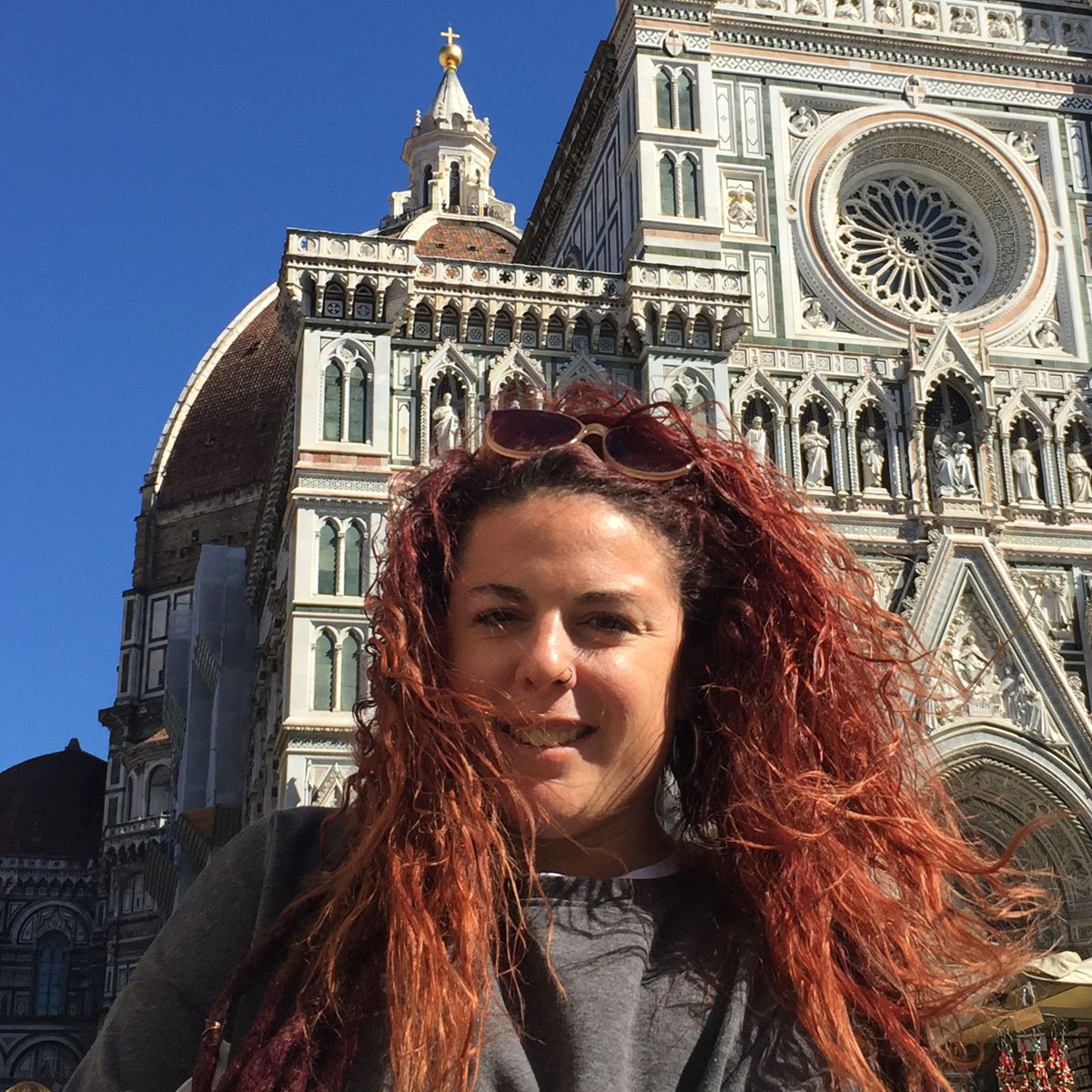Fiesole – Florence’s most important neighbour
Share
Situated in a dominant position on a hill overlooking the Arno and Mugnone valleys, Fiesole, due to its scenic appeal and the richness of its historical and artistic heritage, becomes the most interesting of the towns in the surroundings of Florence.
Its relief is on two hills, San Francesco and Sant’Apollinaire, in the middle of which stretched the valley that still houses today the inhabited area. The presence of civilization on the hills is very ancient and there are still many traces of it today.
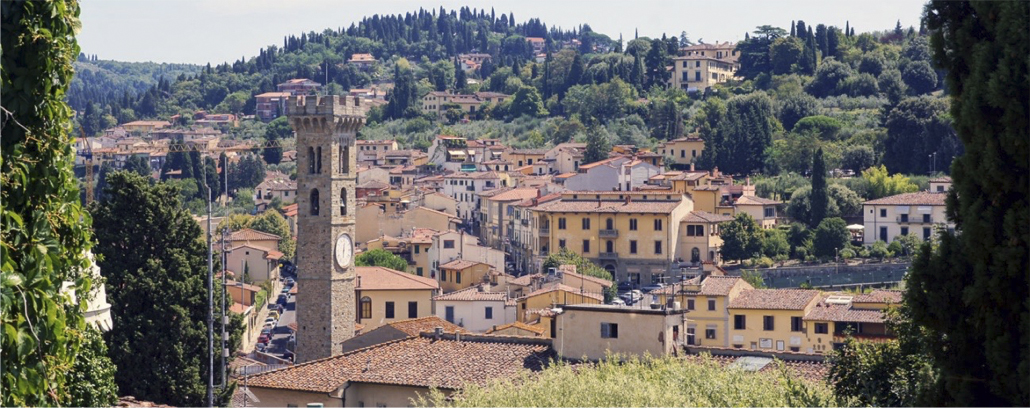
Originally, it was one of the main cities of northern Etruria, an ally of Rome until the third century BC, in 90 BC. had to welcome a colony of veterans from Silla. Thus arose the Roman city ‘Faesulae’, which had a capitol, a forum, temples, theater and was the center of the region; it enjoys considerable prosperity, at least until the barbarian invasions (in 405 AD Stilicho defeated the Goths of Radagaiso there). At the time of the Lombards and the Carolingians the bishops of Fiesole acquired political influence, but the decline of the city, which began during the Lombard domination, increased as the power of Florence grew. You know, that the city already lived at the beginning of the 19th century in the shadow of its most powerful neighbor, who finally conquered it in 1125 and whose history he then shared.
The visitor, who arrives from Florence in Piazza Mino (area of the ancient Roman forum), immediately sees the right side of the cathedral. Built by Bishop Jacopo il Bavaro in 1028 and enlarged in the 13th century, it is dedicated to the martyred Bishop Romolo. The interior has a romanesque style and preserves precious artistic works such as the frescoes by Cosimo Rosselli, tables by the Ghirlandaio school, the sculptures by Mino da Fiesole and on the main altar a splendid polyptych by Bicci di Lorenzo.
Piazza Mino da Fiesole is closed by the picturesque Praetorian Palace (the town hall), fronted by the monument with The meeting of Teano (equestrian bronze statues of Vittorio Emmanuele II and Garibaldi). Next to it, the church of Santa Maria Primerana, an oratory mentioned since 966.
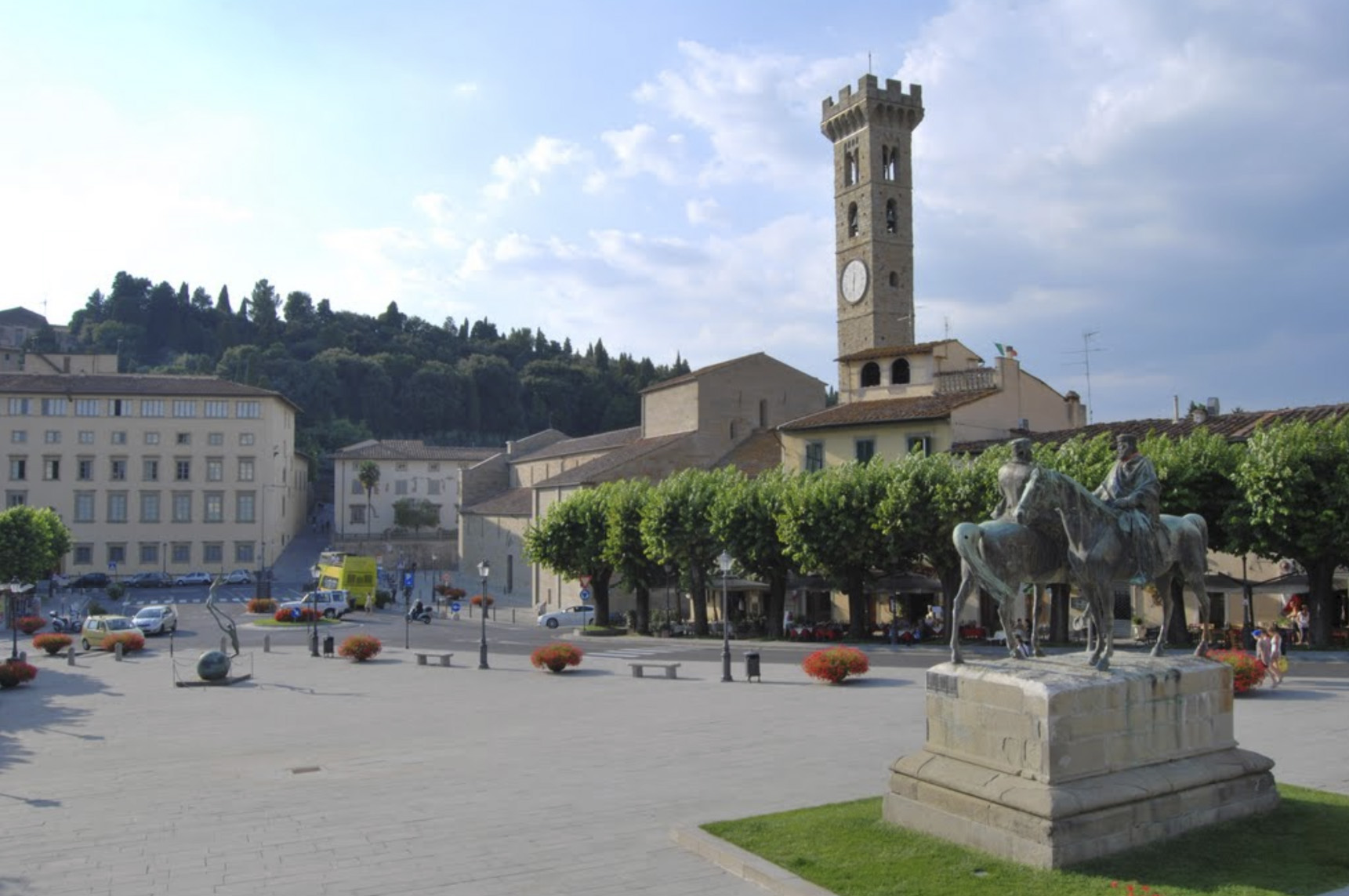
Piazza Mino
On the north side of the main square of Fiesole, Piazza Mino, there is the entrance to the Archaeological Park, one of the most important in Tuscany. It is about 35,000 square meters. a portion of the ancient city lies in the structure determined in Roman times. You can see the remains of a theater, an Etruscan-Roman temple and a spa.
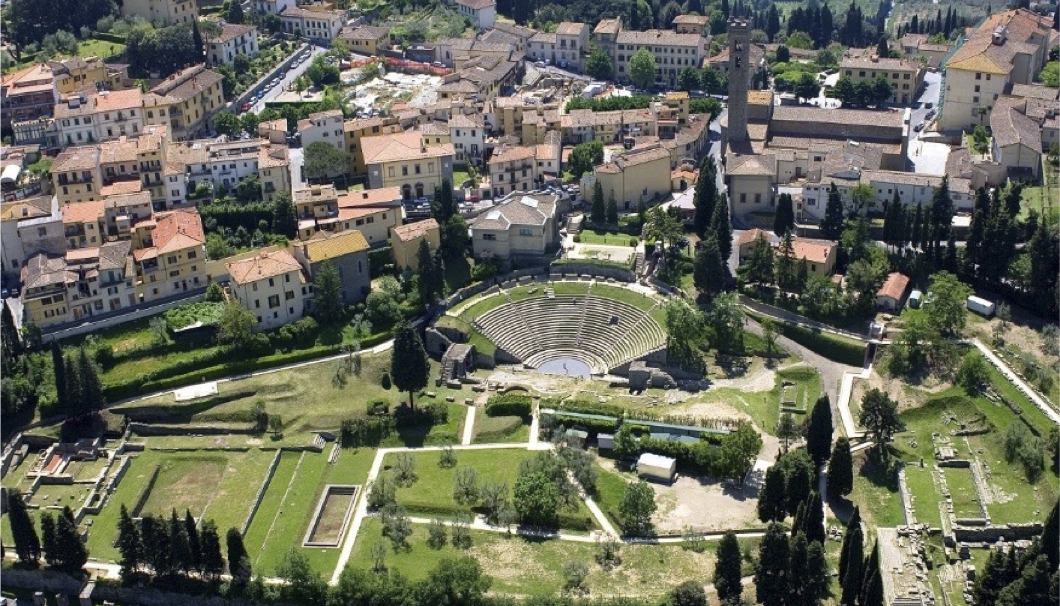
The Theater, the most fascinating space in the archaeological complex, was built towards the end of the 1st century BC. using the stone obtained from the excavation of the rocky slope on which the steps were gradually placed. In the twentieth century the cultural tradition of Roman theater was recovered through the ‘Fiesole Summer Festival’ which still revives its music, dance, prose and cinema shows every summer.
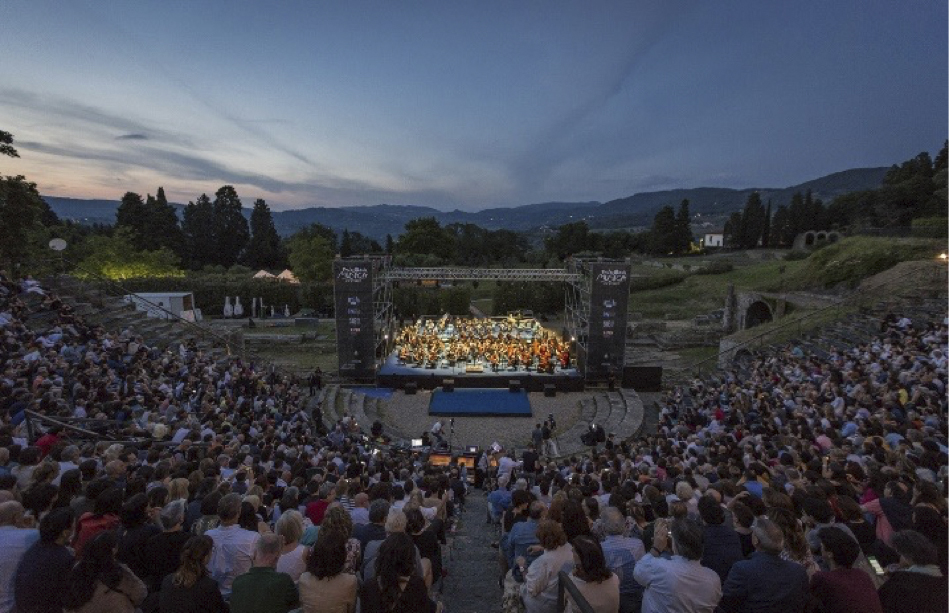
Fiesole Summer Festival
The Archaeological Civic Museum is located within the area. From the appearance of a Tuscan temple, the findings of the excavations of the Area and those from the various finds in the city and in the territory came together. Among the most significant finds we can find stelae in stone, votive bronzes, the great bronze lioness, terracotta, marble statues, Lombard burials, etc.

Archaeological Civic Museum
After visiting the outdoor area and the museum, go down the road behind to see the remains of the ancient Etruscan walls, which have managed to survive the wars and bad weather for all these centuries.
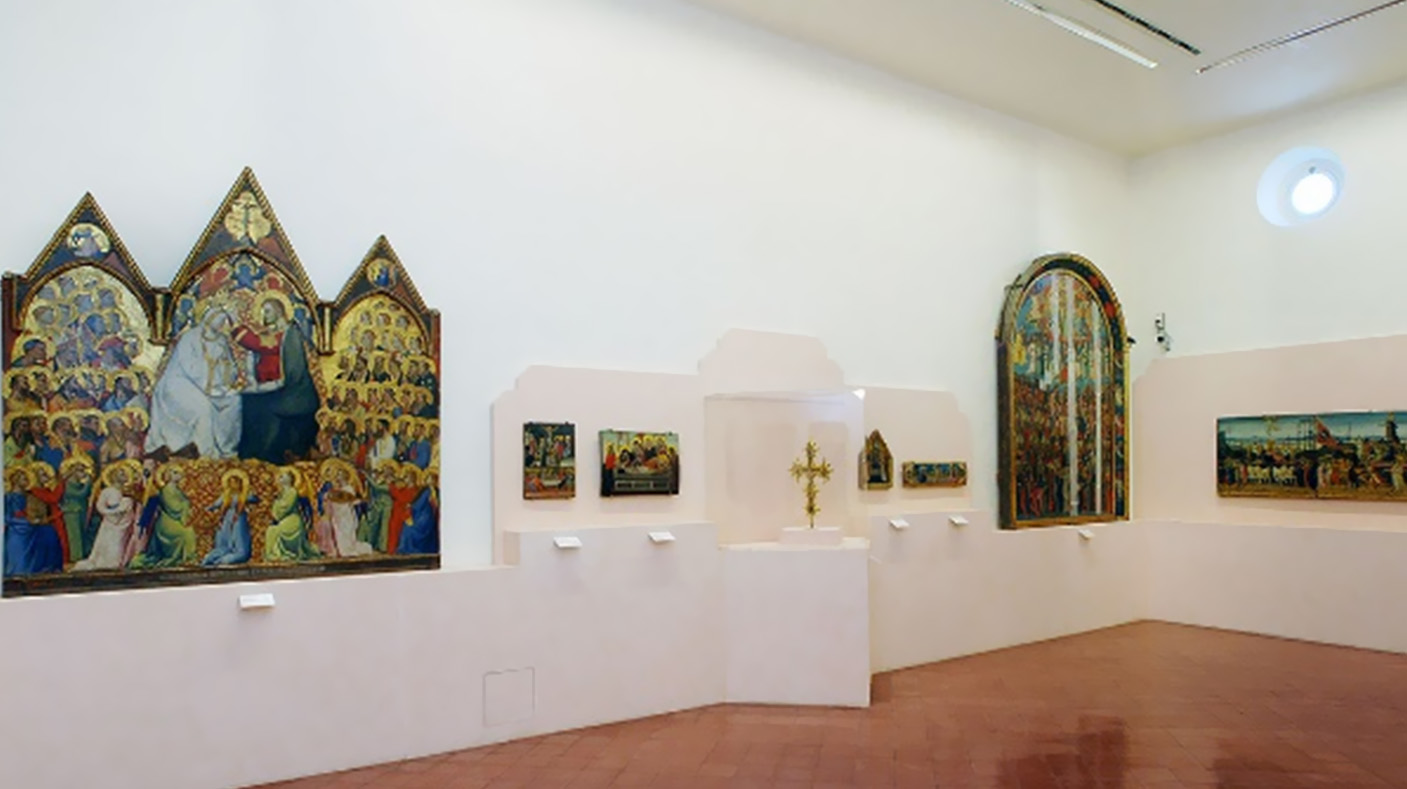
Bandini Museum
Another place that we recommend you visit is the small Bandini Museum, across the street from which the archaeological area is located. Here are preserved some beautiful Florentine paintings of the XII-XIV century – including some by Bernardo Daddi, Taddeo Gaddi, Nardo di Cione and Lorenzo Monaco – as well as some terracotta works of art signed by Della Robbia.
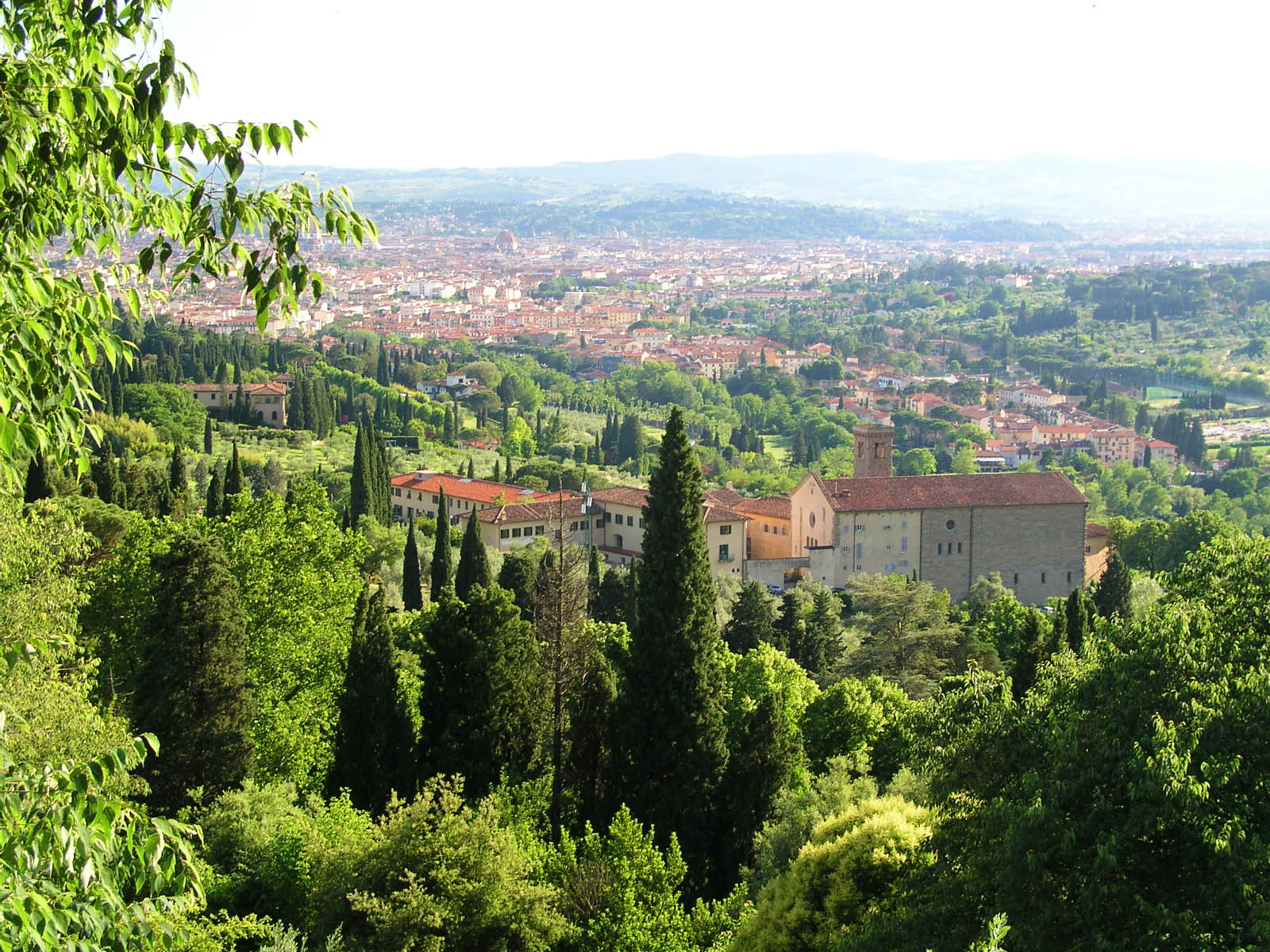
Panorama of all Florence
Returning to Piazza Mino, we recommend taking Via di San Francesco, which climbs steeply into a corner of the square. Arriving at the top of this road you are faced with a wonderful panorama of all Florence. The skyline of the gentle hilly slopes gives way to the historic center of the city where the magnificent architectural structures of Florence stand out, including the imposing Brunelleschi’s Dome, the fascinating Piazzale Michelangelo and the glorious Palazzo Vecchio. A view that offers emotions at any season of the year and at any time of the day.
Continuing you will reach the Monastery of San Francesco. The complex (church and convent) occupies the ancient Etruscan fortress. We advise you to visit the cloister with a well of the fifteenth century and another small cloister of the fourteenth century. Some cells from the 15th century and a small museum can also be visited.

Monastery of San Francesco
Finally, for the more adventurers we point out that in Fiesole there is the Montececeri Park, a great attraction from a naturalistic point of view. Surrounded by greenery, you can enjoy beautiful walks both from a naturalistic, landscape and panoramic point of view. Historically, the park owes its fame to the fact that it was chosen by Leonardo da Vinci in 1506 as a starting point to experiment with his “flying machine”. In memory of the memorable event, there is still a stele inside the park that shows Leonardo’s epigraph on the famous experiment: the stele is located on the small panoramic clearing, now also used as a fully equipped stopover, from which it is said that Leonardo’s machine would have flown.

Montececeri Park
Meritxell Mateu Hill
Art Historian, Manager in Cultural Tourism and Official Tourist Guide.
Born in Barcelona, lover of all Italy and of all art, she chooses Florence as a city of adoption where you always find her to let tourists (and Florentines) know the wonders of its streets.
Founder of ” Il mio viaggio in Toscana ” (My trip to Tuscany), through its social networks, Instagram and Facebook, gives everyone the opportunity to discover Florence and Tuscany from close up.
Web: www.ilmioviaggiointoscana.com
Instagram: https://www.instagram.com/ilmioviaggiointoscana/
Facebook: https://www.facebook.com/IlmioviaggioinToscana/





